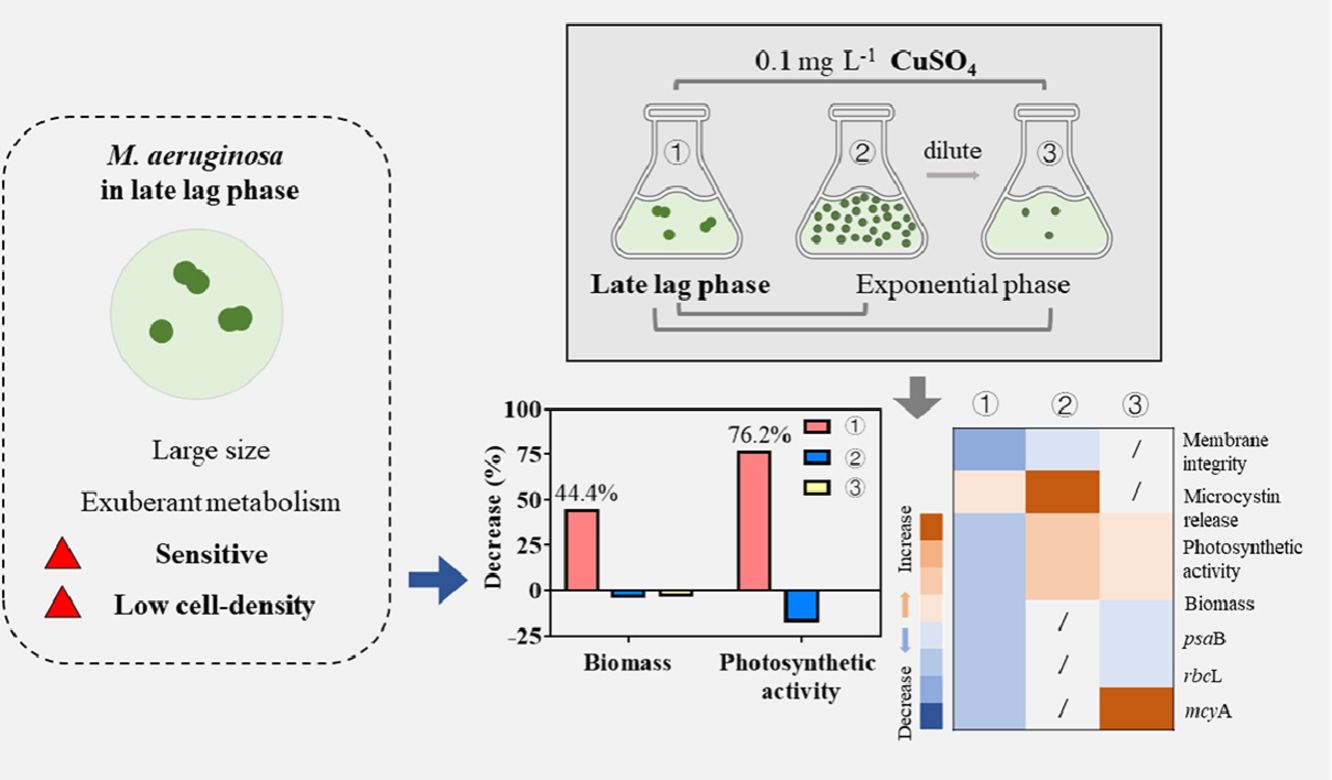Higher sensitivity to Cu2+ exposure of Microcystis aeruginosa in late lag phase is beneficial to its control
Xuanxuan Xian, Xi Li, Chengsong Ye, Kun Wan, Mingbao Feng, Chen Luo, Xin Yu*
Water Research
https://doi.org/10.1016/j.watres.2022.118207
Published: 1 May 2022
Abstract
Cyanobacterial blooms are always treated in exponential phase, which demands high dosages of algicides (e.g., CuSO4). Actually, cyanobacterial blooms in late lag phase exhibit low cell-density and specific physiological/biochemical characteristics, implying the possibility of controlling blooms in a more efficient and economical way with CuSO4 treatment if cyanobacterial cells in late lag phase can be treated. In this study, the outbreakof a Microcystis bloom was simulated, and Microcystis samples in late lag and exponential phases were treated with CuSO4. The results showed that M. aeruginosa in late lag phase had a higher ratio of dividing-cells, Fv/Fm and intracellular total organic carbon content (TOC) than that in exponential phase, indicating that its metabolic activity was vigorous. M. aeruginosa in late lag phase could more easily be blocked, since a higher decrease in chlorophyll-a, Fv/Fm and membrane integrity occurred under the same dosages of CuSO4 exposure compared to M. aeruginosa in exponential phase. Meanwhile, microcystin release in late lag phase was less than that in exponential phase. Moreover, higher sensitivity in late lag phase was confirmed at the individual level, as the photosynthesis related genes psaB and rbcL were more down-regulated than those in exponential phase. In general, cyanobacteria in late lag phase exhibited higher sensitivity to CuSO4, indicating that CuSO4 treatments in late lag phase can achieve a higher control efficiency and fewer release of microcystin with low-dosages algicide. Hence, it is a more environmentally friendly strategy to control cyanobacterial blooms than the traditional strategy applied in exponential phase.
